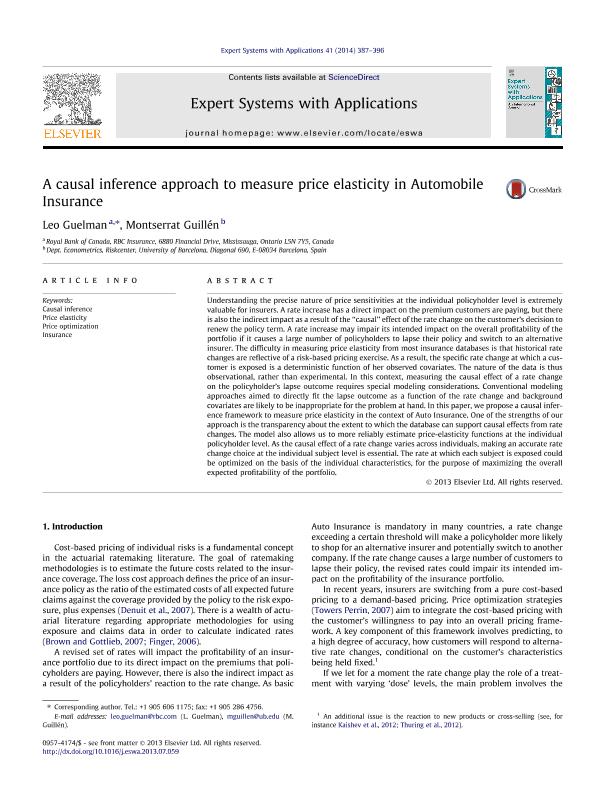portfolio if it causes a large number of policyholders to lapse their policy and switch to an alternative insurer. The difficulty in measuring price elasticity from most insurance databases is that historical rate changes are reflective of a risk-based pricing exercise. As a result, the specific rate change at which a customer is exposed is a deterministic function of her observed covariates. The nature of the data is thus observational, rather than experimental. In this context, measuring the causal effect of a rate change on the policyholder¿s lapse outcome requires special modeling considerations. Conventional modeling approaches aimed to directly fit the lapse outcome as a function of the rate change and background covariates are likely to be inappropriate for the problem at hand. In this paper, we propose a causal inference framework to measure price elasticity in the context of Auto Insurance. One of the strengths of our approach is the transparency about the extent to which the database can support causal effects from rate changes. The model also allows us to more reliably estimate price-elasticity functions at the individual policyholder level. As the causal effect of a rate change varies across individuals, making an accurate rate change choice at the individual subject level is essential. The rate at which each subject is exposed could be optimized on the basis of the individual characteristics, for the purpose of maximizing the overall expected profitability of the portfolioRegistros relacionados: En: Expert Systems with Applications.- Oxford : Elsevier Limited. - Volume 41, Issue 2, 1 February 2014 ; p. 387396Materia / lugar / evento: Seguro de automóviles Pólizas Cálculo de la prima Métodos de medición Elasticidad Cartera de seguros Rentabilidad Cálculo actuarial Otros autores: Guelman, Leo
Outras classificações: 6


